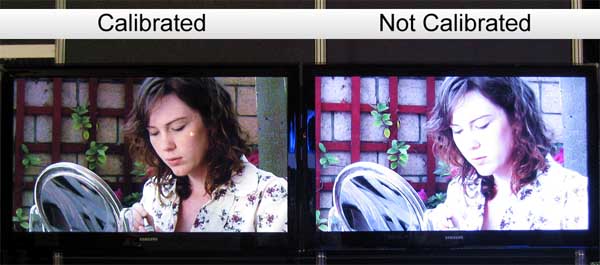Hello! We hope to continue to build on these newsletters to bring you both opportunities to learn about products and services we provide and, we hope to deliver useful information... like the differences of a conventional lighting system versus an automated solution.
AVDomotics is an isf certified level I video calibration partner. Most television sets in homes these days have the capacity to deliver a significantly better picture than the built in video processors that come with the TV can support.
With the addition of a video processor and calibration, you can see the difference!
The isf web site also has an informative demo illustrating the difference an external video processor and calibration can make. You made a significant investment in your TV or home theater, why not get the best out of it?

More about video calibration...
What is display calibration? Display calibration is the process of using a display’s setting controls to adjust the on-screen image so that it matches the original source content. This allows the calibrated display to accurately reproduce the color and clarity of the video signals from any source device, be it a computer, digital signage player, cable/satellite box, or Blu-Ray player. Whether it is to optimize a TV display for the best image quality possible or to ensure that you are working on a properly profiled monitor, display calibration removes any doubt that the digital content you are viewing and/or creating is accurately represented on-screen.
Why calibrate a display? A fully calibrated display provides many benefits compared to an un calibrated display with factory settings. These include:
Calibration improves the ability to have a more enjoyable viewing experience. Displays that provide a proper amount of brightness to deal with ambient light and glare are easy to read and have more natural colors for an overall more pleasant and engaging image. For content creators, having a calibrated display is a critical element in an effective digital workflow to ensure content color consistency and prevent mistakes that can cost time and money. Displays also change color as they age, but proper periodic calibration keeps them looking as good as the day they came out of the box. Calibration offers a clear set of benefits to provide the user(s) the best image quality possible from their display and experience content as the creator intended.
Why are displays not already calibrated? It is a common misconception that displays are already calibrated during production to look their best. In reality, manufacturers do not ship displays calibrated from the factory and most are far from optimized for office or home use. The majority are set to grab your attention in the retail environment. The primary goal for manufacturers is to sell their products and to do so they must stand out among the competition. For televisions and monitors, they must 'pop' for the consumer browsing, which usually means they are set to be the brightest and flashiest that they can be. Though this may look impressive in the glaring lights of the store, it is not the optimal way to watch television or view content.

CalMAN Calibrated vs. Factory Settings
In addition, the display’s viewing environment has a significant impact on what is seen on screen, so a display can only be properly calibrated once installed. Every different location where a display is to be installed has its own unique environment with different colored walls, ceiling, floor and a spectrum of possible ambient lights. Each of these elements greatly affect how light is perceived by the user's eyes and the calibration adjustments needed to compensate. How a display is calibrated for a bright office will be very different from how it would be calibrated for a dark home theater environment. This is why display calibration is not a 'one size fits all' process in which settings for one display will not always work for another, even if they are identical models.